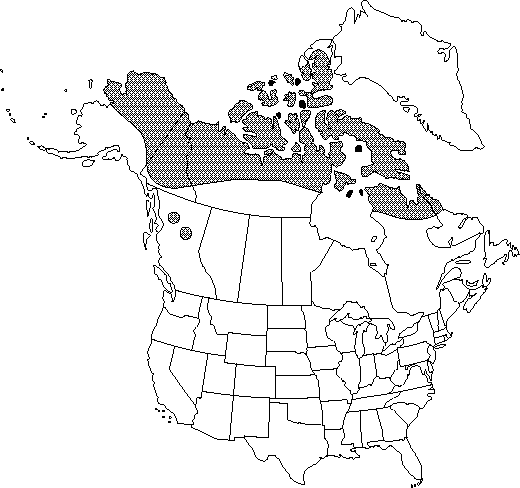Difference between revisions of "Papaver lapponicum"
Bergens Mus. Årbok 2: 45. 1931.
FNA>Volume Importer |
FNA>Volume Importer |
(No difference)
| |
Revision as of 19:55, 24 September 2019
Plants loosely cespitose, to 3.5 (seldom less than 2) dm. Leaves to 12 cm; petiole 1/2-3/4 length of leaf; blade green to gray-green on both surfaces, lanceolate, 1-2×-lobed with 2-3 pairs of primary lateral lobes; surfaces hirsute, sometimes densely so, with long white trichomes; primary lobes lanceolate, mostly divided, apex obtuse or acute to acuminate, frequently bristle-tipped. Inflorescences: scapes erect, straight, generally longer than 20 cm, glabrate to hispid. Flowers to 3.5 cm diam.; petals yellow, sometimes distally tinged with pink; anthers yellow; stigmas 5-7, disc convex. Capsules oblong-ellipsoid, to 2 cm, 1-2.5 times longer than broad, strigose with brown trichomes. 2n = 42 (as P. hultenii), 56.
Phenology: Flowering Jun–Aug.
Habitat: Mesic tundra and in sand and gravel of floodplain terraces and shorelines
Elevation: 0-1000 m
Distribution

B.C., Nfld., N.W.T., Que., Yukon, Alaska, Eurasia (northernmost Norway and Russia).
Discussion
We recognize Papaver lapponicum in a much narrower sense than did G. Knaben (1959). Much further study is needed to assess the relationships of North American populations with several taxa from the Russian Far East. Plants with rose-colored petals have been distinguished as A. lapponicum var. salmonicolor (P. alboroseum of some authors, not Hultén). Such specimens from arctic Alaska appear to be the same as P. shamurinii Petrovsky from Russia. Knowledge of P. lapponicum from Greenland, where evidently it also occurs, is inadequate to permit an accurate account of its distribution there.
Selected References
None.
